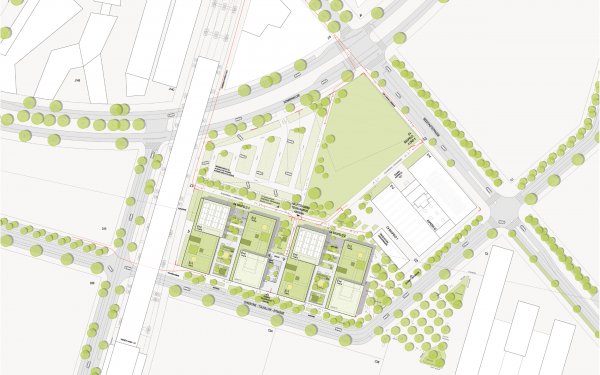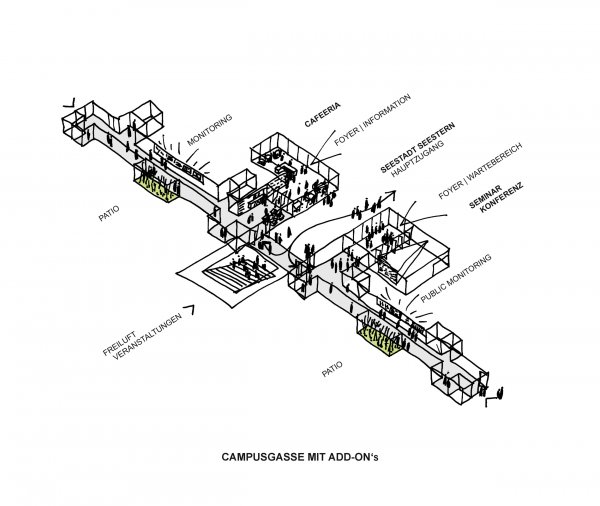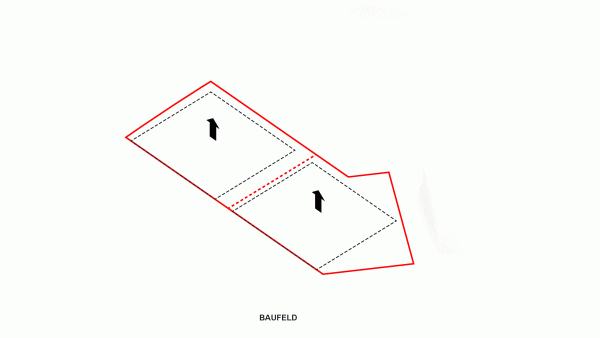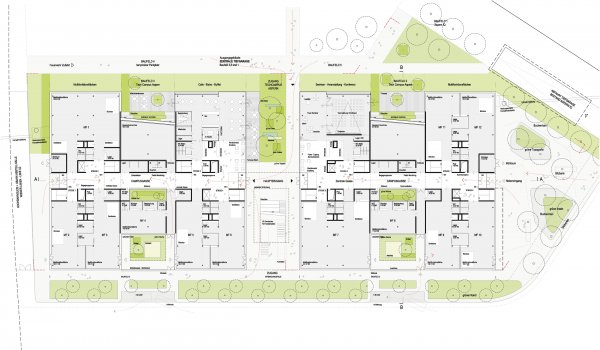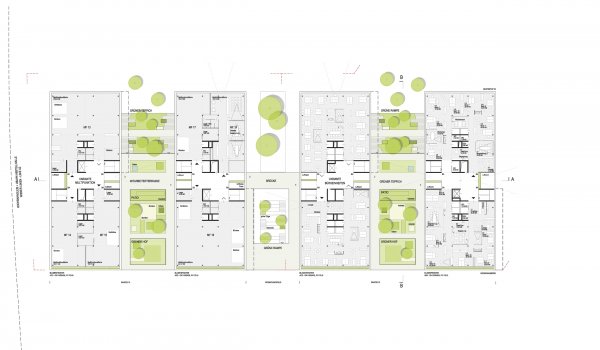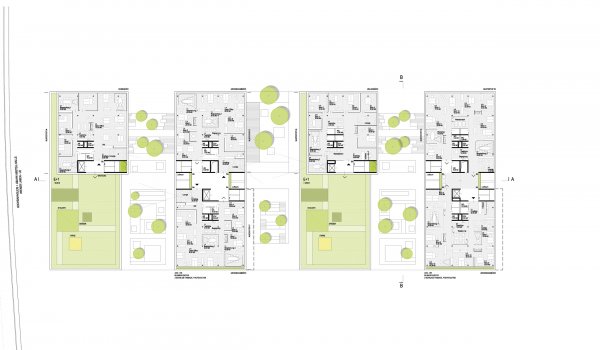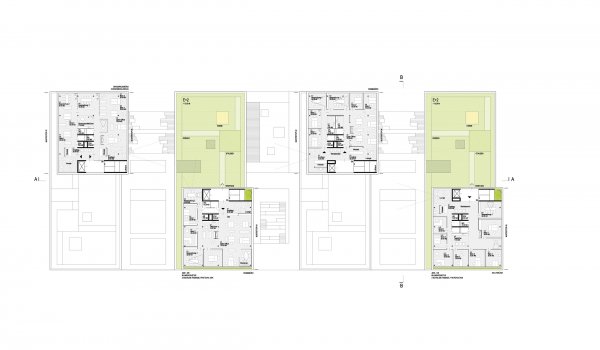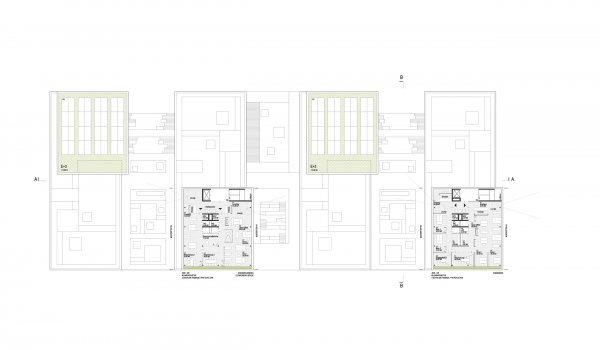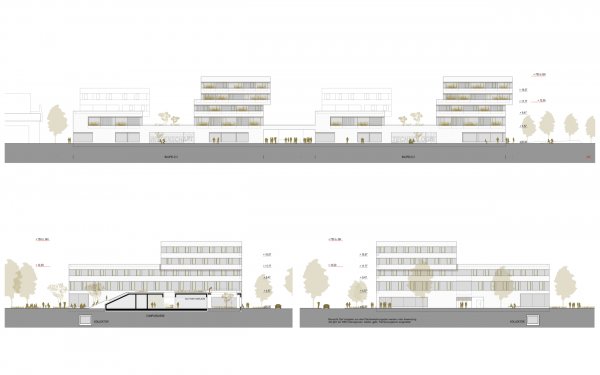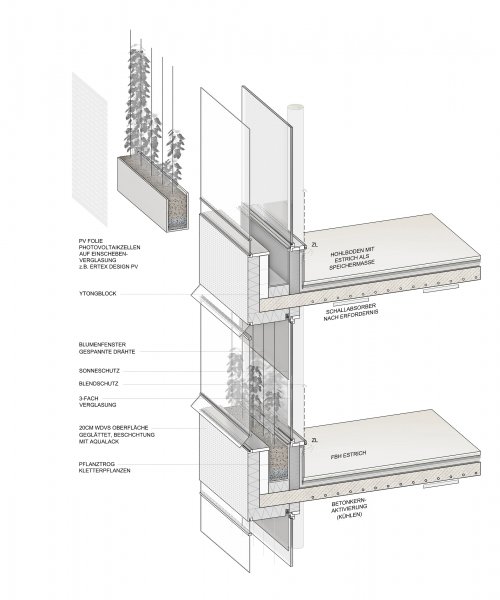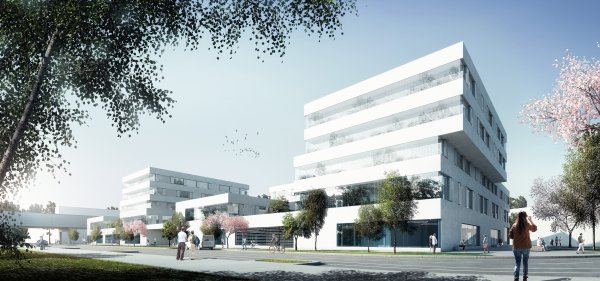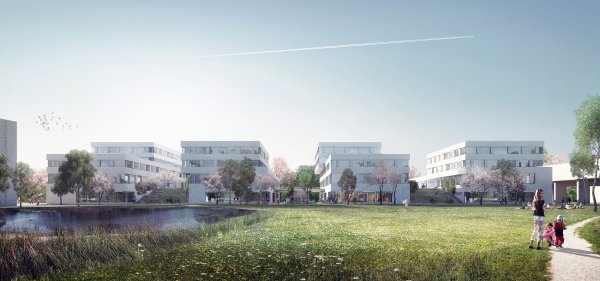Technology and Science Campus Aspern
Project data
Year
- 2016
Status
- Competitions
Type
- Education
New Construction of the Technology and Science Campus
Seestadt Aspern
2nd Stage, Architectural Competition, 2016
Integration into the Urban Development
The Seestadt Aspern Research and Science Campus is a lighthouse project that builds on the experience gained with the already completed Aspern IQ building. It picks up on its positive features and develops them further in a meaningful way.
In order to form the starting point of the conceptual approach, the design of the existing area is rethought with regards to its entirety. The formulation of the accesses, a public square, integration to IQ Aspern, and the creation of a distinctive design of the building structures are taken into account for the optimal and economic implementation.
Campus Aspern - A Place to B
The ground floor zone forms a base. Staggered and rhythmic structures determine the main view from Christine-Touaillon-Strasse. Horizontal and vertical structuring of the elements form a distinctive urban and architectural composition of the buildings, which allows a high degree of modularity:
The buildings are staggered into smaller units on each floor. This allows you to react according to user needs and demands and to reduce or increase the amount of rental space in smaller steps. This layering of the building structure creates a user-flexible staggering of the office units and a flexible proportion of rental space. At the same time, a property is created with a high recognition value and timeless attractiveness.
The overlapping of the property and the open space results in a complex urban identity-forming structure. With the transitions from the "Seestadt Stern" Campus, the open space offers differentiated public and semi-public areas, and it forms a green carpet in the area of the quiet inner field, which extends over the sloping surface of the base zone to the level of the 1st floor - Piano Nobile. This creates a semi-public area with playable surfaces, meeting point, lounge areas, stairs and meadows for lying down, while also sitting on the sloping area and on the level of the Piano Nobile.
Architectural Concept
The ground floor is developed from the impression that the maximum permissible degree of construction (60% of the building) will not be exceeded, while having the division of the multifunctional areas with high flexibility. In the design, special functions were assigned to the main circulation of the Campusgasse - in the middle of the two buildings - in order to generate a lively, flourishing, and exciting traffic branch in the green middle of the master plan.
In principle, the building class II was not exceeded in principle. Only the building parts on the 3rd and 4th floors ("boxes") are designed as dormers, while the maximum height development of 7.5m is not exceeded. The building alignment was not exceeded by the add-on facades.
Add-on Campusgasse
Via the entrances, one enters the Campusgasse, with its niches that extends into the docked foyer areas and staircase cores. These elevator lobbies / staircase vestibules, with their elegant design, serve as distributors of the horizontal and vertical access areas for future employees.
The extension areas of Campusgasse will be filled with "Add-On Rooms", i.e. public or semi-public areas such as foyer and recreation zones: public monitoring area, zones for sitting and lingering, break areas, general functional areas, and other ancillary rooms. This (interlinked) sequence of development and public to semi-public functions form the core of the Research and Science Campus in the Seestadt Aspern.
The grid of the extremely economically dimensioned structures (50x20 metres) is based on a standard office grid of 1.35 m axial dimension, and they have no basement! Thus, a maximum of directly assignable office functions can be generated (ratio GFA/NNF).
Construction, Façade with ADD-ON effect
The standard façade of the Campus Aspern is defined by a conventional, economical construction of concrete lintel and parapet wall, which can be, due to its simplicity, greatly reduced with its concrete and reinforcement volume and with a cost-saving rigid foam insulation (polystyrene panels with a low manufacturer energy index - reduction of grey energy). It is then finally implemented with a smooth, white plaster with an aqua paint coating.
Windows are intended as light metal elements, while being aligned to the EIFS facade. In the lateral flanks of the window element, ventilation lamellas are situated for weather-protected, night-time cooling.
